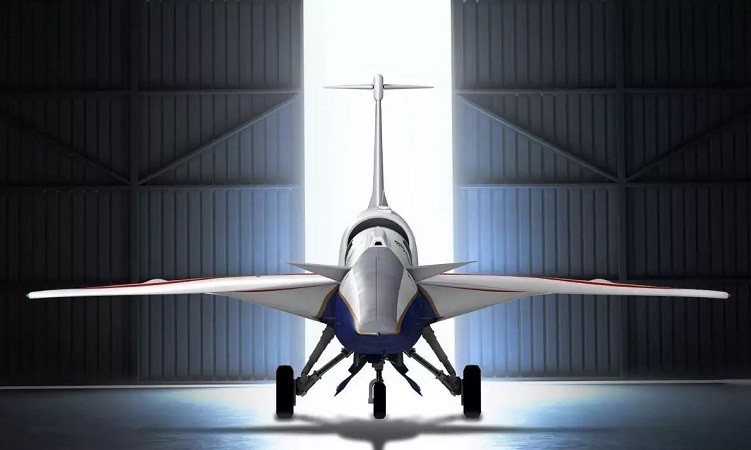
Prepare for a game-changer in air travel – the Advanced X-59 supersonic aircraft is all set to whisk passengers from New York to London in a mere three and a half hours! Unveiled by aeronautic authorities at NASA and Lockheed Martin in Palmdale, California, this 100-foot-long and 30-foot-wide marvel is designed to break the sound barrier.
Unlike its predecessor, the Concorde, which retired two decades ago after facing hefty maintenance costs and a fatal crash in 2000, the X-59 boasts a top speed of 925 miles per hour. The unveiling marks a significant leap in aeronautical advancements, featuring improvements in design, shaping, and technology to minimize the disruptive sonic boom experienced by communities beneath.
When aircraft breach the sound barrier, known as Mach 1, a disruptive sonic boom is generated, capable of shattering ground-level windows. In response, the US prohibited civilian planes from reaching this speed over land in 1973. According to officials, the X-59's innovations aim to mitigate these disturbances, marking a breakthrough in commercial supersonic travel feasibility over land.
NASA Deputy Administrator, Pam Melroy, expressed, “The X-59 transcends its role as a mere aircraft; it stands as a symbol of our collective ambition to redefine the future of supersonic travel.” Melroy, a former space shuttle commander, added, “This breakthrough really redefines the feasibility of commercial supersonic travel over land. It brings us closer to a future that we can all understand: cutting flight time from New York to Los Angeles in half.”
Highlighting global concerns, NASA mentioned that supersonic flights are banned by the United Nations and various countries due to the startling sonic booms exceeding the speed of sound, which is 767 miles per hour. In 2018, Lockheed Martin secured a $250 million contract to construct a demonstrator plane, powered by General Electric Co.’s F414 engine, capable of reaching 1.5 times the speed of sound. The plane, with room for one pilot, is equipped with a v-shaped wing and elongated nose to reduce the sonic boom to a faint thump.
Originally scheduled for a 2021 maiden flight, the X-59 project, inclusive of testing, is estimated to cost about $632 million over eight years, according to NASA. This ambitious endeavor holds the promise of transforming the landscape of supersonic air travel, ushering in a new era of speed, efficiency, and reduced travel times.
NASA Unveils X-59 Supersonic Aircraft Set to Redefine Air Travel